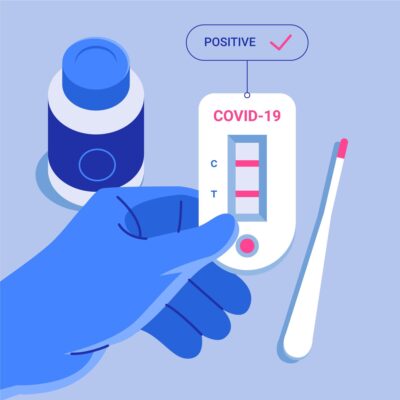Covid-19 has plunged the world into a health crisis that has affected many areas. The new Omicron variant brought a new and large wave of infected people, setting off alarms worldwide.
Now more than ever the use of rapid Covid tests ( Covid-19 BOSON, Covid-19 NEWGENE, Covid-19 WESAIL, Covid-19 GOLDSIDE, Covid-19 FLOW FLEX) have been used massively for the early diagnosis of viruses in many countries.
Although enough has been said about these tests, some unknowns still arise around them, since the possibilities of false negatives or positives are present, but what are the chances of them happening?

Why do false positives occur?
The problem of false positives occurs because all rapid Covid tests are likely to suffer from inconsistencies and this can happen due to aspects unrelated to them.
It is estimated that in places where there is a greater number of infections and tests are carried out, there is a great probability that these imperfections will occur. However, work continues to prevent this from happening.
In molecular tests there is information that they are less likely to occur since they are more specific, however, rapid tests, although they have been perfected, still have this weakness.
What is more likely to occur, a false negative or positive?
Between these two failures, false negatives are more likely to occur, since sometimes the tests are performed in the initial stages of contagion or when the patient is already in recovery time, which means that the test does not detect enough genetic material.
In variants such as the Omicron , rapid oral fluid antigen tests work better than nasal tests since the virus settles first in this cavity, so the Covid-19 saliva tests can be a good way to get away from false negatives.
To avoid this problem, it is best to inform your doctor about the best time to perform a test, which is usually after 5 days of presenting symptoms.
Probabilities of False Positives Occurring
Researchers from the University of Toronto have studied this case and after verifying the results obtained from antigen tests on asymptomatic workers in Canada, they concluded that false positives represented 0.05% of all the tests analyzed.
In addition, they reached the appreciation based on the results that the manufacturing had a greater impact on these inconsistencies than the implementation of the tests. These studies show that the numbers of false positives in antigen tests are very low.
In conclusion, the chances of false positives in the SARS-CoV2 rapid antigen test are very minimal. Covid tests in general have good effectiveness rates and are an effective and fast means of diagnosing Covid.

